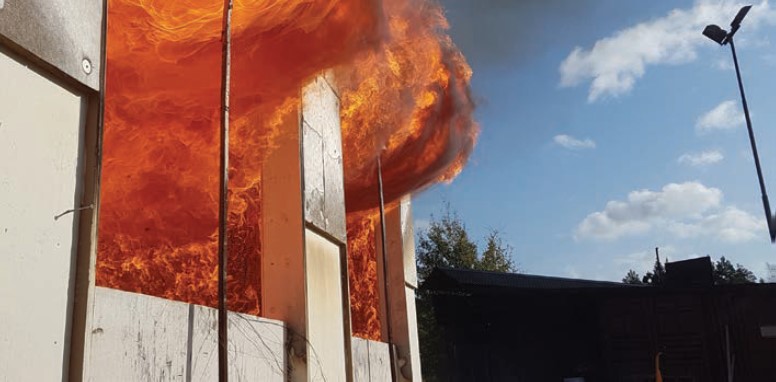Combustibility challenge
27 July 2023Dr Daniel Brandon discusses recent advances in fire safety for mass timber buildings
In the past two decades, the introduction of glued laminated timber (GLT) and crosslaminated timber (CLT) has allowed for the use of timber as a structural material in increasingly complex buildings. This has led to a significant increase in the maximum height of mass timber buildings, which is now approximately five times higher than the tallest mass timber building in 2005. The global production of CLT has also doubled every four years, reaching around 2 million m3 in 2020.
While the use of mass timber is considered a viable response to the climate crisis due to its ability to store carbon, its combustibility presents new challenges in terms of fire safety compared to concrete and steel. As the quantity of mass timber structures increases, so does the significance of these fire safety challenges.
To identify and address these challenges, a growing number of large-scale compartment fire tests have been conducted in the past decade. These tests have revealed the impact of exposed or partially encapsulated timber surfaces on fire growth, smoke development, flame spread rates, and the exposure to the structure, façade, or adjacent buildings.
As regulations to some extent already address the contribution of exposed surfaces to fire growth and smoke development through surface class requirements, recent research has focused more on understanding the impact of the timber structure itself on the structural fire exposure and façade exposure.
Ensuring that a structure withstands a fire that consumes all combustible content in a room is a common approach to prevent collapse. If the structure is combustible, however, this starting point cannot be used as the structure itself would be allowed to be consumed.
Avoiding an increased risk of collapse in mass timber buildings by fires in situations where effective fire service intervention cannot be assumed, therefore requires limiting the fuel contribution of the timber structure to the fire. If significant, increasing the resistance to this contribution becomes essential. In addition, risks can be reduced by lowering the likelihood of such fires occurring (for example, by using sprinklers).
Several recent research efforts have indicated that the fuel contribution of mass timber can be limited by limiting the surface area of visible timber and preventing significant increases of timber combustion rates during the fire.
A recent study, titled “fire safe implementation of visible timber in tall buildings”, included five large scale tests that showed that preventing such increases of combustion rates by (a) using an enhanced CLT adhesive that prevented fire induced delamination and (b) preventing significant charring behind gypsum boards, allowed fire to continuously decay while exposing a surface area up to twice the floor area. This is in stark contrast with previous tests where such measures were not implemented and no tendency to continuously decay or to decay at all was observed. The study, however, emphasised the importance of maintaining a sufficient distance between exposed walls to limit interaction and highlighted the correlation between the extent of exposed mass timber surfaces and the required fire resistance to prevent collapse.
Additionally, the study developed a predictive model and started addressing insurance-related aspects such as post-fire CLT repair, strategies for monitoring and extinguishing remaining smouldering, and minimising water damage. See:
https://www.ri.se/en/what-we-do/ projects/fire-safe-implementation-of-masstimber- in-tall-buildings
Despite the significant advancements in knowledge, it is crucial to adopt a cautious approach when it comes to designing timber buildings and to recognise that structural performance is only one aspect of fire safety. Especially in countries where regulations have not yet been adjusted to incorporate the effects of timber, care must be taken in implementing current regulations to ensure safe evacuation and mitigate external fire spread as well.

